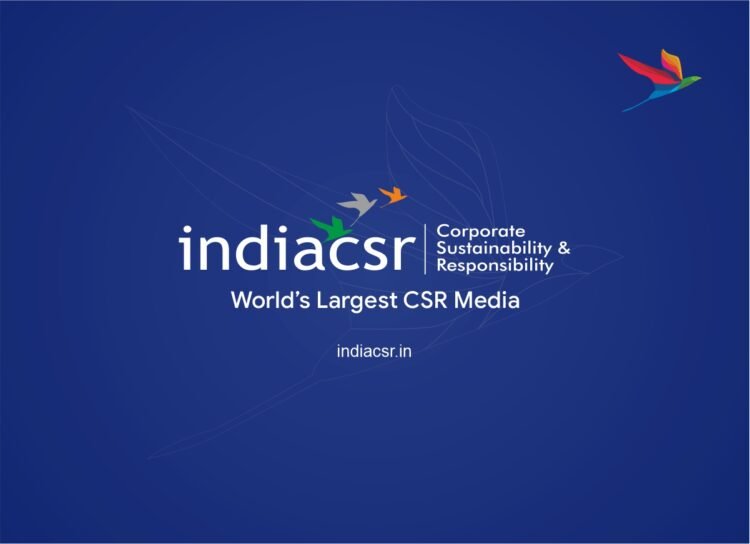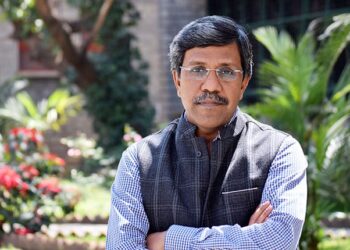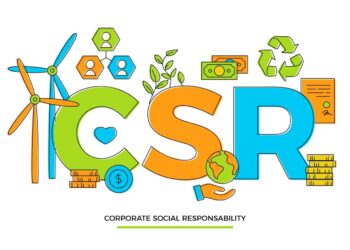By Cherryl S. Kolhe, KHPT
MUMBAI: Jointly organised by KHPT and USAID in collaboration with Maharashtra State AIDS Control Society (MSACS), Maharashtra District AIDS Control Society (MDACS) and American Chamber of Commerce on 14th July 2017 at Hotel Novotel, Juhu Beach, Mumbai.
Collaborative Workshop on CSR Initiatives for Vulnerable Children
KHPT organized a workshop in collaboration with Maharashtra State Aids Control Society (MSACS), Mumbai District AIDS Control Society (MDACS) and CII with support from USAID to proactively engage CSR initiatives in the area of welfare of vulnerable children across Maharashtra.
This was to initiate and accelerate coordinated efforts between CSR and the govt. bodies for improved planning, resource allocation and implementation support to address the key need areas for OVC like education, life skills, skill development and livelihoods, social protection and nutrition The workshop also created opportunities to elicit best practices from across corporate CSR initiatives involving vulnerable children for developing a compiled publication for visibility and cross learning. 33 CSR representatives attended the workshop.
The objectives of the workshop were to share best practices and cross leverage expertise to develop holistic models that address OVC needs. It intended to create a platform for CSR and government bodies to collaborate in a manner that bridged the gap at the knowledge and practice level. It also aimed to mainstream OVC by developing partnerships, advocacy and creating opportunities. The two priorities that the program focused on in terms of OVC was to address their nutritional needs across their life cycle and building an enabling family ecosystem for the child’s overall well being.
Workshop Structure
The workshop consisted of three sessions. The first session discussed the needs of OVC in Maharashtra. The second session comprised of the efforts and experiences of CSR’s in bridging the gaps and the third session consisted of group work and discussion based on the thematic areas of support.
The workshop started off by screening a video on KHPT’s family focused approach. The dignitaries were welcomed with saplings as a symbol of nurture and growth of ideas. This was followed by the inaugural session where a plant was watered to signify the fostering thought.
During the keynote address, Prof. Shalini Bharat, Deputy Director, TISS, discussed the challenges faced by OVC in India. She emphasised that children need to be prioritised as “they form the first generation of children that are getting into adulthood.” Most children up to 18 years of age are either orphaned or separated from their parents, lack socio economic support, live in sheltered homes, are displaced, mentally challenged, affected or infected, miss out on care or are exploited for sex. She explained that the biggest challenge with these children was that “They need to be treated as a homogeneous group, but are not a homogeneous group”. She went on to say that; “The best possible way to provide them with services was to integrate the Sexual and Reproductive Health services along with the HIV testing services. This could also mean integrating HIV services with other NHM services.” She discussed institutional challenges, which included after care services, foster families, adoption and re integration with society and work. Not all institutions are government recognised, and there is a lack of networking at institutional level. She also pointed out that for any project to be successful, it is important to have evidence based back up which was possible through a good monitoring and evaluation system.
Dwipal K. Bose in his inaugural address said that, “The community action along with the corporate input must happen at the ground level”. Primary education, Adolescent girls, economic empowerment of women and skill development should be focused upon as a whole. He explained that; “Each Company needs to have a business strategy where they can work with the community at the grass root level where CII can play an important role in collective action”.
Surabhi Wahal from AmCham described the work her organisation is involved with. She also talked about their publication initiative- ‘Happily going miles for their smiles’ which discussed their various CSR initiatives. She ended by briefly stating their expectations of cooperation and collaboration with various CSR’s following this workshop.
Dr. Padmaja Keskar also briefly in her address expressed the dire need to work with child development.
The Chief guest of the function was Leena Tribhuvan. She is an Advocacy and Community Achiever, She is currently pursuing her PhD in geography from the University of Pune. She expressed her struggle with finishing her education. She urged the CSR’s present to contribute and get involved because their little help could make a big difference to the dreams and ambitions of children.
Sangeeta Kaul from USAID said that, “The private industry is a thriving one, and should be utilised to handle OVC issues. All interventions need to be tailor made for 0-18 years of age, especially adolescent needs.” She requested for a long-term commitment from the CSR’s for the OVC initiative.
In his presidential address, Parimal Singh, PD, MSACS expounded on the word ‘vulnerability’ as the probability of an adverse event happening. He firstly commended Leena on her message of dignity and hope. He explained that the social, psychological and economic factors around HIV were always present, but it has been talked about only recently. The seriousness of the problem is such that for every CLHIV, there are 6 CABA’s (Children Affected By AIDS) in need of help. He said that, “the main priority is to give the children a life of dignity and hope, and thus urged the CSR’s to invest in a hope of receiving more than what they give”.
Mohan HL, the Managing Trustee, KHPT in his concluding remarks stated, “Everyone needs to work together in line with the government and not parallel to it.”
SESSION 1: MAHARASHTRA SITUATION WITH OVC-NEEDS AND OPPORTUNITIES.
This session started with a presentation by Dr. Troy, Project Director, OVC. He explained the aspects of OVC in Maharashtra (MH). He stated that there were 1,68,942 OVC in MH. Their main problems are malnutrition, education, homelessness, stigma, lack of love and emotional care and risk of trafficking and abuse. He also touched on other aspects such as gender and its effect on their health. For e.g. girls have a higher school drop out rate given their roles as care givers at home and in society. This is due to the inability to negotiate their life with their parents. His presentation briefly profiled the OVC situation in MH.
Dr. Mamta Manglani, who was heading the PCoE (Paediatric Centre of Excellence) at Sion Hospital, Mumbai discussed her journey and challenges while establishing the PCoE. She shared her challenges in treating children and the problems faced by care givers. She discussed their various initiatives like the nutrition program; palliative care centre and the telemedicine centre. In her appeal of help to the CSR’s she showcased her success stories and emphasised that “a little help can go a long way for children. She expressed a need for a good lab, effective treatment measures for opportunistic infections, child friendly centres, telemedicine centres, social support, support for grand parents, need of a paediatrician to examine children, funding for third line ART treatment due to failure of second line ART.” However, there was a feedback from one of the CSR’s that there was a dearth of paediatricians, which currently was being filled by visiting ones. She finally concluded her talk by urging the CSR’s to invest by quoting Churchill, “ We make a living by what we earn, but we make a life by what we give.”
Dr. Shashikala Acharya, APD, MDACS made the next presentation. She reemphasised that HIV is a social problem. She expressed the children’s needs in various fields. For e.g. a child has the basic Right to Education, but is unable to avail it. CLHIV are extremely malnourished, even in terms of micronutrients. They need energy dense foods to reduce chances of OI. She expressed a need to upgrade all ART Centres to child friendly ones, increase the number of telemedicine units and provide children with career skilling and placement facilities along with household amenities.
The session concluded with a word from the child advocates who expressed their basic needs and urged the CSR’s that their small contribution will go a long way for them. They said that, “They lacked basic household amenities, have to work hard on meagre wages which is insufficient to run the home, their mothers are worried for them and go hungry on various occasions due to lack of food. They are fearful of their dreams going unfulfilled.”
One of them described the housing condition to be so poor that “ the water from the leaking roof falls in their plate of food, and the house cannot even keep a rat out that often runs through their plate”.
The session was capsulated by Ms. Mallika who stated that,“Children have resilience. We need to facilitate that resilience, and help them take control of their lives”.
SESSION 2: EFFORTS AND EXPERIENCES OF CSR IN BRIDGING GAPS.
This session witnessed various CSR’s present their scope of work.
Ambuja Cement: They work with vulnerable populations such as migrants, but are currently focused on the Ambuja Manoviaks Kendra, which is a school for children with special needs.
Ronald Mc.Donald’s House of Charity in India: They work with providing parents and caregivers a place to stay while their child is getting treated for illnesses in hospitals. They have a center at KEM hospital.
JSW Foundation: It works in the Education, Health, Sports, Arts, Culture and Skilling sector.
Max India Foundation: They focus on preventive health, early diagnosis and run an effective immunization program. Other initiatives also include health check up camps, deworming, Vit A pills and surgeries and treatment for children.
Reliance India Foundation: After presenting their body of work, it was suggested that, “Partnerships not only among NGO’s and CSR’s is vital to achieve the needs, but also partnerships among various CSR’s too is required to enhance a learning experience, as well as sharing of expertise.”
The other CSR’s that presented included Kaivalya Foundation, TATA Trust and ACC Cement, which worked on child and urban health in general. ACC has two initiatives going. Arogyam that works towards reducing IMR, malnutrition and HIV morbidity. They also run the Swampoorna Swachhata program that aims at making villages free of open defecation.
Novartis: They run the Social Business Model through their CSR initiative called Arogya Parivar, where they try to bridge the gap between primary and secondary care. They use their own medicines for this initiative, and get help from mother NGO’s for operation management.
The Kaustubh Ramani foundation is the funding partner for our partnering agency, CCDT. Sensing the “lack of holistic growth in children, they aim to focus on them through their initiatives. They have reached 14,000 children over the last 12 years through micro financing, nutrition kits and education support. However, they feel this number is a mere drop compared to the ocean comprising of 1, 68, 942 OVC”.
SESSION 3: GROUP WORK AND DISCUSSION ON THEMATIC AREAS OF SUPPORT
The participants were allocated groups based on their thematic interests. During registration, they were asked to choose an area of their interest and were given colored bands to signify those. These were: Red for Skilling and Placement, Blue for Education, Purple for Health and Psychosocial Needs and Yellow for Nutrition. They were asked to discuss in their groups the key needs of children under their particular theme and list down possible ways of extending support to meet these needs. They presented their thoughts at the end of the discussion.
Red- Skilling and Placement
Needs: Help for trauma care, child compliancy to a program, engaging with families to keep the child on the program, transition into adulthood, training for high skills and upgrade, logistics and accommodation during training and socialization skills.
Solutions: Alignment with government schemes, leverage, microfinance and company tie ups for vocational courses, ITI’s leverage technologies, skill upgrades and orienting corporates on flexibility.
Blue- Education
Needs: Addressing stigma, inability to attend school due to illness, soft skill classes, lack of finances and scholarships to complete education, post 18 allotments for children in institutes.
Solutions: Scholarships and Integration with WCD for certain initiatives.
Purple- Health and Psychological Support
Needs: Nutrition, lack of belongingness and support, lack of clean water, air and sanitation, early diagnosis of physical and psychological problems in adolescents.
Solutions: Increased expenditure on health, improved diagnostic facilities, proper health care for vulnerable populations, helplines for psychological support, train and trained counselors, Positive reinforcement through social media and advocacy.
Yellow-Nutrition
Needs: caloric gap, micronutrient gap, HIV requires higher food intake.
Solution: leverage from government department such as AAY (Antodaya Anna Yojna), Anna Suraksha Yojna, ICDS for growth and monitoring, wellness clinics, adopt a few children through CSR, Behavior Change and Counseling for required food intake with low cost recipes.
CONCLUSION
The session concluded with a few words by Mohini Singh, CEO, Max India Foundation. She suggested that, “One should accept their role as nation changers. Get the government bodies to work at local levels. Sometimes government has the funding but cannot implement. In such cases, the CSR’s can get the government involved and help the government with implementing projects”. She concluded by saying that, “It is the responsibility of the monetary privileged to fulfill the needs of the less privileged”. She concluded by inspiring everyone to “March on and continue the good work!”
In conclusion, Mr. Mohan just reiterated the fact that the key to achieving the needs of children was to work along with the government and not parallel to it. He ended with a brief vote of thanks and a promise to keep in touch and coordinate with one another for future work.



















